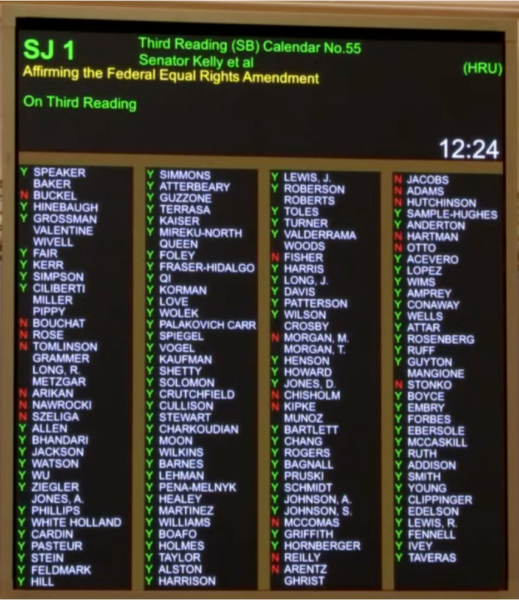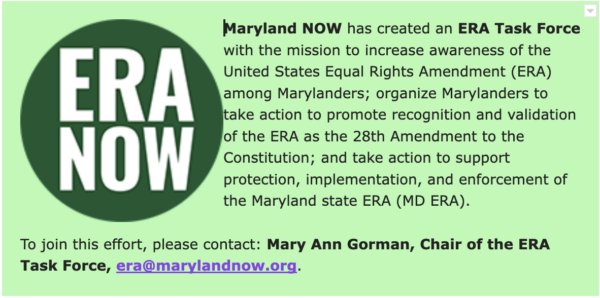
Section 1.
Equality of rights under the law shall not be denied or abridged by the United States or by any State on account of sex.
Section 2.
The Congress shall have the power to enforce, by appropriate legislation, the provisions of this article.
Section 3.
This amendment shall take effect two years after the date of ratification.
Sign the Sign4ERA Petition urging Congress to recognize the Equal Rights Amendment.
Sign the petition online at Sign4ERA.org or sign by shouting into your phone!

Urge constituents in the following US congressional districts to contact members of the United States Congress to urge them to sponsor the ERA-affirming resolution in the House of Representatives (House Joint Resolution 25) and sign the House discharge petition (Discharge Petition 6):
VA-3 Bobby Scott (VA-03) – urge to sign House Discharge Petition 6; co-sponsor HJ Res 25
ERA Congressional Outreach Script
Contact President Biden to urge him to direct the US Archivist to publish the ERA.
Follow #ERANOW #ERA100 #28thAmendment @ERACaucus @ERACoalition
Thank members of the Maryland legislature for passing a resolution in the 2024 Maryland General Assembly that affirms the federal Equal Rights Amendment as the 28th Amendment to the Constitution.
Senate: Members of the Senate voted 37-10 to support SJ1, moving the measure to the House. The vote was bipartisan with all Democratic senators and the following three Republican senators voting YEA: Senator McKay, Senator Folden, and Senator Corderman.
Thank your senator and Senators McKay, Folden and Corderman for a bipartisan favorable vote on SJ1!
House: Members of the House voted 105-20 to pass SJ1 in the 2024 General Assembly on April 6, 2024. The vote was bipartisan with 98 Democratic delegates and 7 Republican delegates voting YEA.
Thank your delegate for a bipartisan favorable vote on SJ1!

Maryland Senate Joint Resolution 1: Affirming the Federal Equal Rights Amendment (SJ0001)
Purpose of the Maryland ERA-Affirming Resolution
(If your organization would like to join our coalition as a co-signatory to the letter to legislators, contact Mary Ann Gorman at era@marylandnow.org.)
Mary Ann Gorman, Chair
Julie Wiater Ransel, Education Outreach Team Lead
Julie Wiater Ransel and Jeannette Feldner, Congressional Outreach Team Leads
Tracy Lantz and Karina Schipps, ERA Petition Team Leads
Phebe Wood, VoteEquality RVG Eastern Shore Van Tour Team Lead
